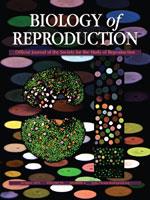Asynchronous embryo transfer (ET) is a common assisted reproduction technique used in several species, but its biological effects on postnatal and early development remain unknown. The aim of this study was to determine whether asynchronous ET produces long-term effects in mice. Postnatal development, animal weight, systolic blood pressure (SBP), relative organ weight (liver, spleen, kidneys, heart, lungs, brain, and testicles), and behavior (assessed in open-field and elevated plus maze tests) were assessed in CD1 mice produced by different ET procedures: 1) the transfer of Day 3.5 (D3.5) blastocysts to the uterus (BL-UT); 2) the transfer of D3.5 blastocysts to the oviduct (BL-OV); or 3) the transfer of D0.5 zygotes to the oviduct (Z-OV). In vivo conceived animals served as controls (CT). The transfer of blastocysts to the uterus or zygotes to the oviduct was defined as synchronous, and transfer of blastocysts to the oviduct was defined as asynchronous. Both synchronous and asynchronous ET resulted in increased weight at birth that normalized thereafter with the exception of asynchronous ET females. In this group, female BL-OV, a clear lower body weight was recorded along postnatal life when compared with controls (P < 0.05). No effects on animal weight were produced during postnatal development in the synchronous ET groups (BL-UT, Z-OV, and CT). Both synchronous and asynchronous ET had impacts on adult (Wk 30) organ weight. SBP was modified in animals derived from blastocyst but not zygote ET. Effects on behavior (anxiety in the plus maze) were only detected in the BL-UT group (P < 0.05). Our findings indicate that zygotes are less sensitive than blastocysts to ET and that both synchronous and asynchronous blastocyst ET may have long-term consequences on health, with possible impacts on weight, arterial pressure, relative organ weight, and behavior.
How to translate text using browser tools
29 July 2015
Effects of Synchronous and Asynchronous Embryo Transfer on Postnatal Development, Adult Health, and Behavior in Mice
Angela P. López-Cardona,
Raúl Fernández-González,
Miriam Pérez-Crespo,
Francisco Alén,
Fernando Rodriguez de Fonseca,
Laura Orio,
Alfonso Gutierrez-Adan
ACCESS THE FULL ARTICLE

Biology of Reproduction
Vol. 93 • No. 4
October 2015
Vol. 93 • No. 4
October 2015
asynchrony
behavior
blastocyst
early development
Embryo transfer
embryo-maternal communication
oviduct




